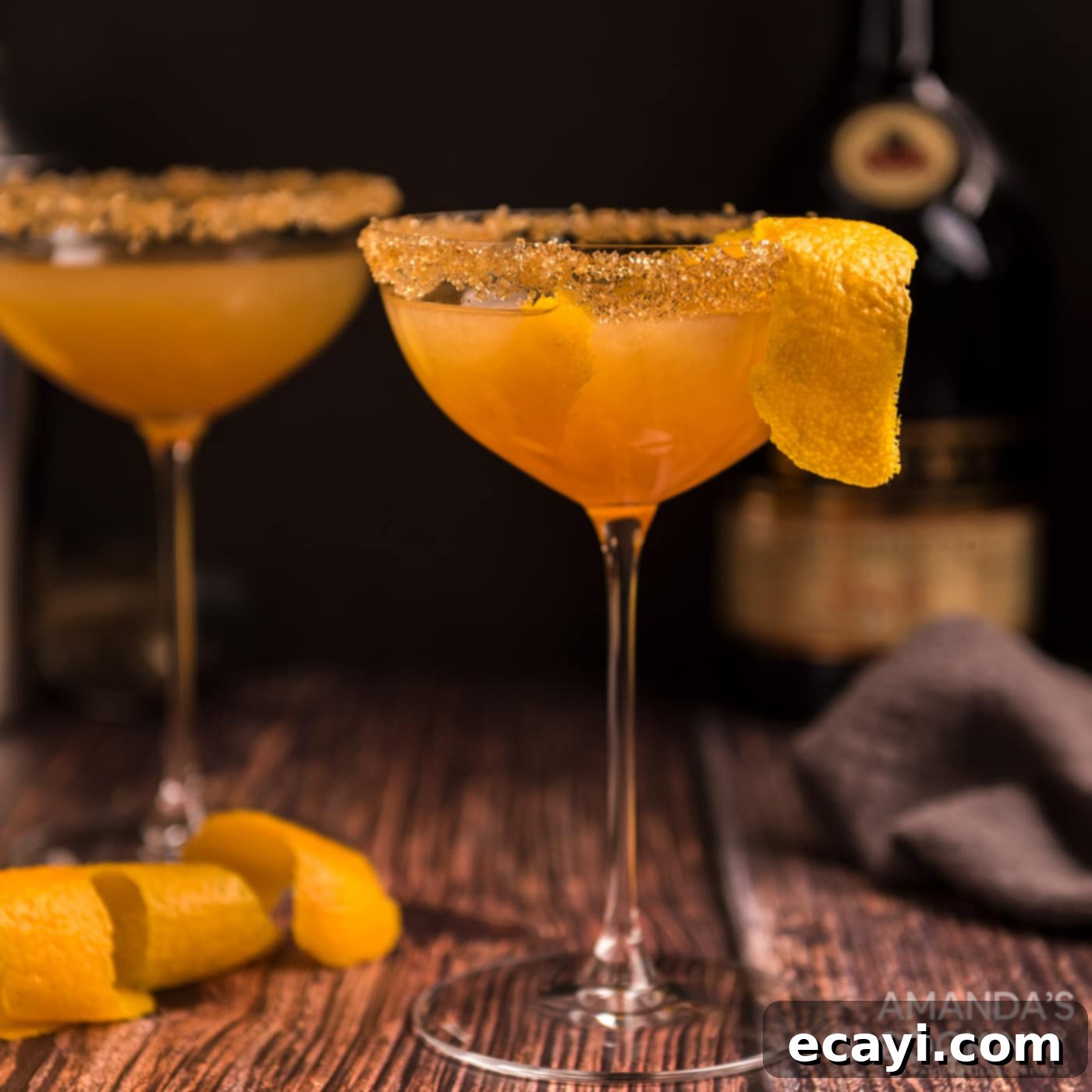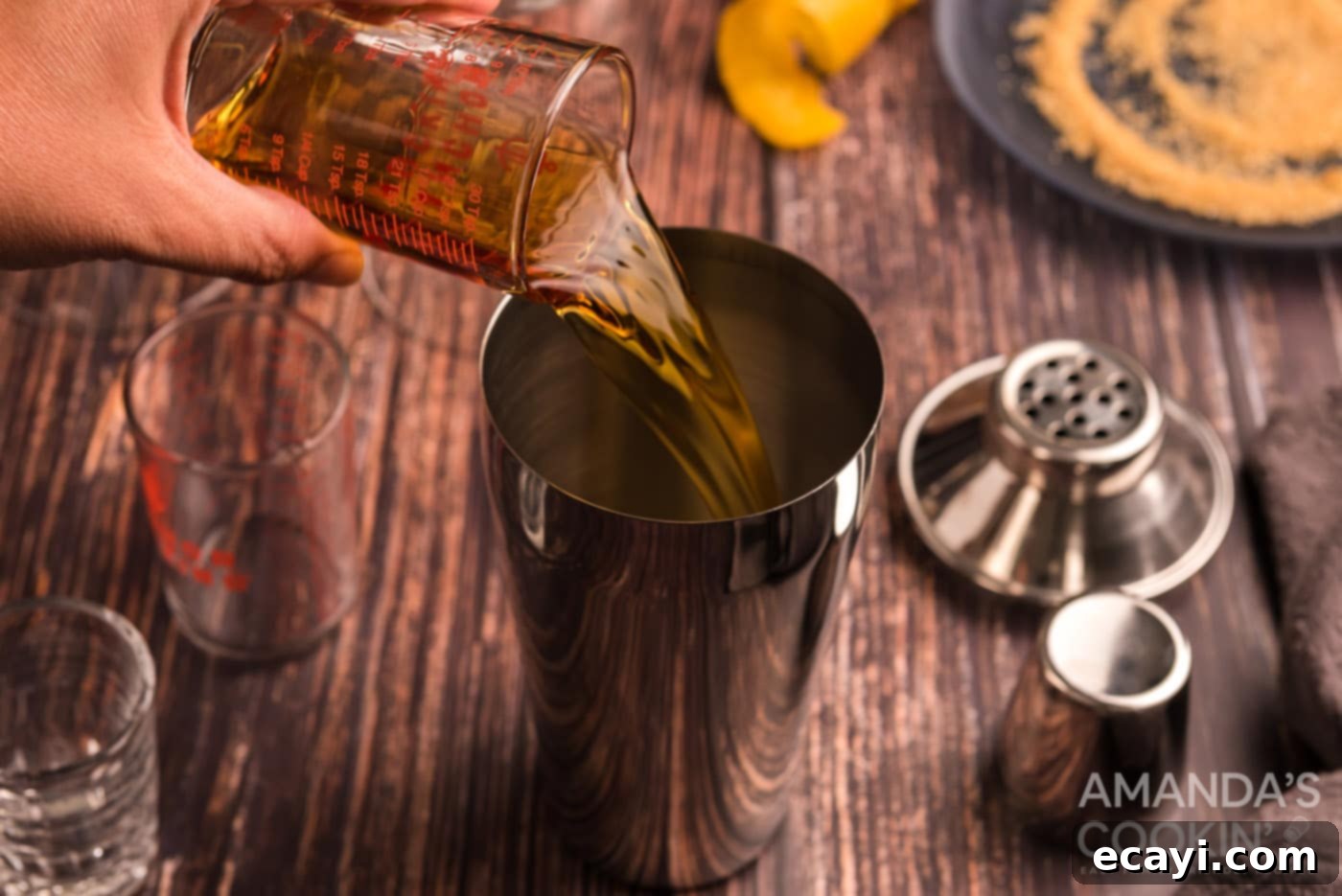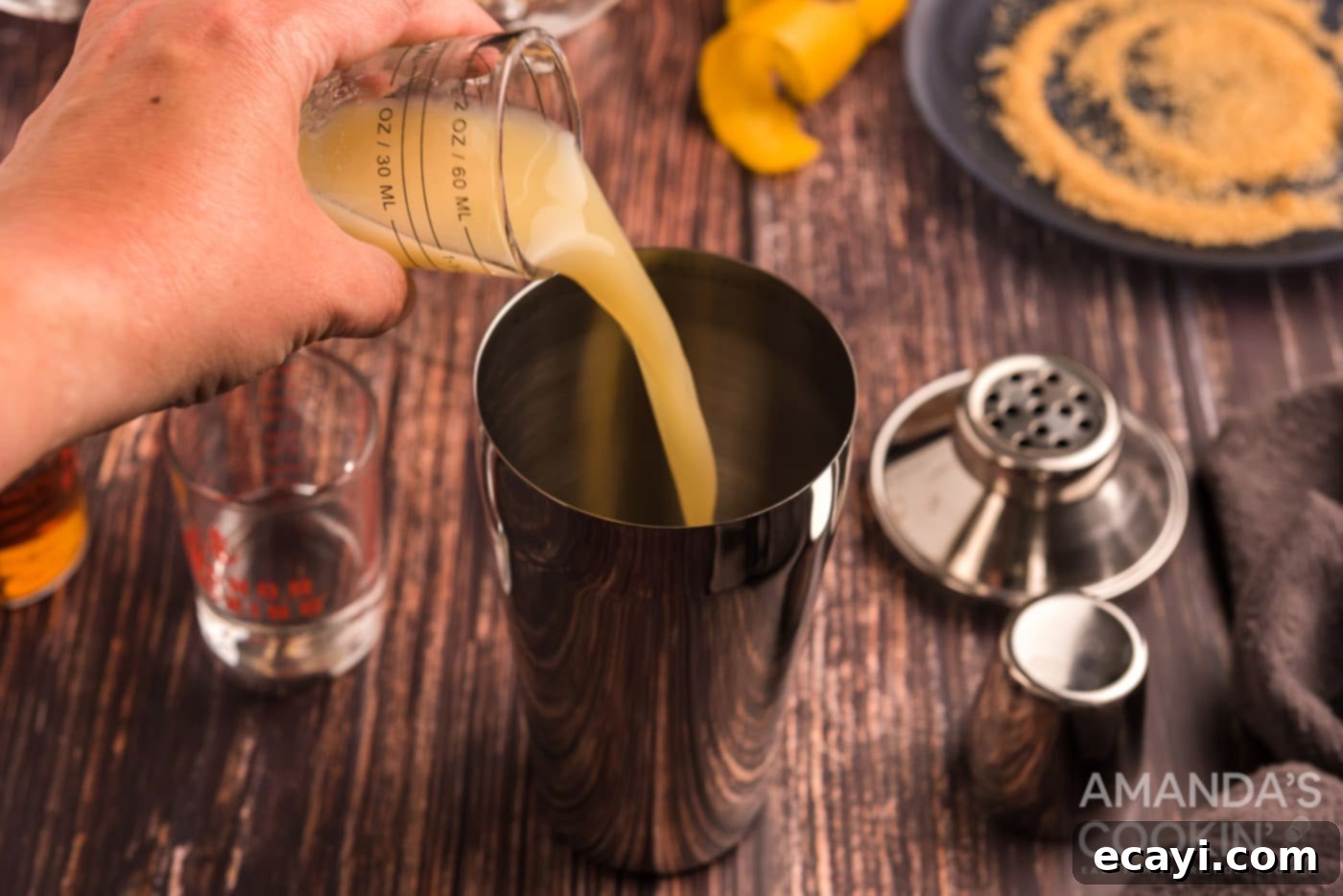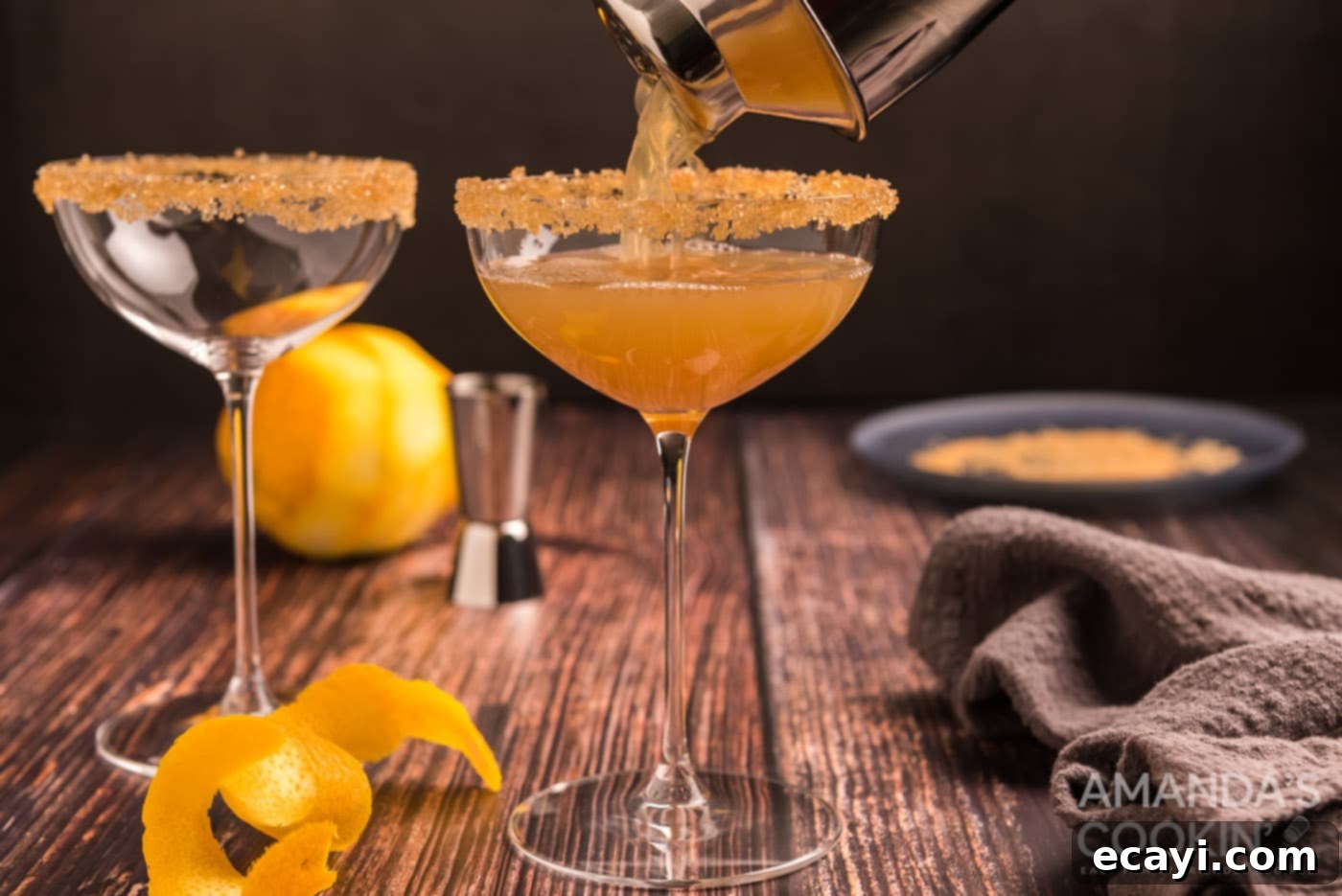The Perfect Sidecar Cocktail: A Timeless Blend of Brandy, Triple Sec, and Lemon
The Sidecar cocktail is a timeless classic, offering a sophisticated and refreshing experience that stands apart from overly sweet concoctions. With its crisp, citrusy, and subtly bitter profile, it’s the ideal drink to share with someone special – your metaphorical “sidecar” companion in life. This elegant cocktail boasts a rich history and a perfectly balanced flavor that makes it a favorite among discerning palates.
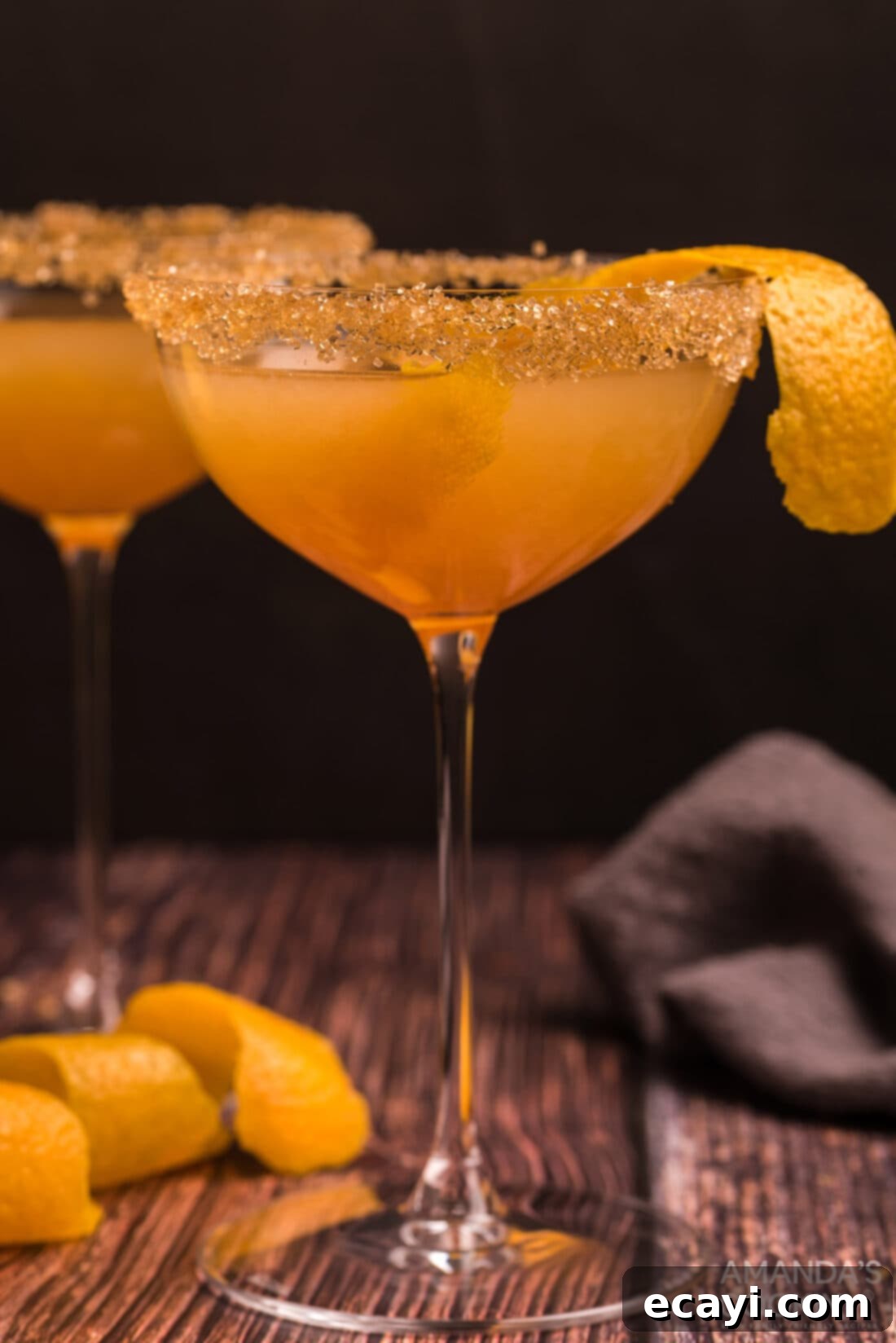
Why This Sidecar Cocktail Recipe is a Must-Try
The Sidecar is more than just a drink; it’s a piece of cocktail history, shrouded in delightful controversy. Its exact origin is hotly debated, with several prestigious establishments vying for credit, most notably the legendary Ritz Hotel in Paris and the esteemed Buck’s Club in London. This captivating cocktail emerged towards the end of World War I, and its name, inspired by the motorcycle sidecar, has given rise to numerous playful origin stories, each bartender claiming their connection to the sidecar was the most authentic.
What makes this specific Sidecar recipe truly exceptional is its adherence to the widely accepted English version, which has gained immense popularity for its superior balance. While the original French recipe sometimes called for equal parts brandy, triple sec, and lemon juice, the English iteration, which we champion here, wisely shifts the ratio to two parts brandy to one part each of triple sec and fresh lemon juice. This adjustment allows the rich, complex notes of the brandy or cognac to shine, while the triple sec and lemon juice provide the perfect tart-sweet counterpoint without overpowering the base spirit. The result is a robust yet refreshing cocktail that is both sophisticated and incredibly palatable, a true testament to classic mixology.
If you prefer a cocktail with a touch more sweetness but still crave that vibrant, puckery citrus kick, be sure to try our delightful Lemon Drop Martini. It’s another citrus-forward favorite that’s sure to brighten your day.
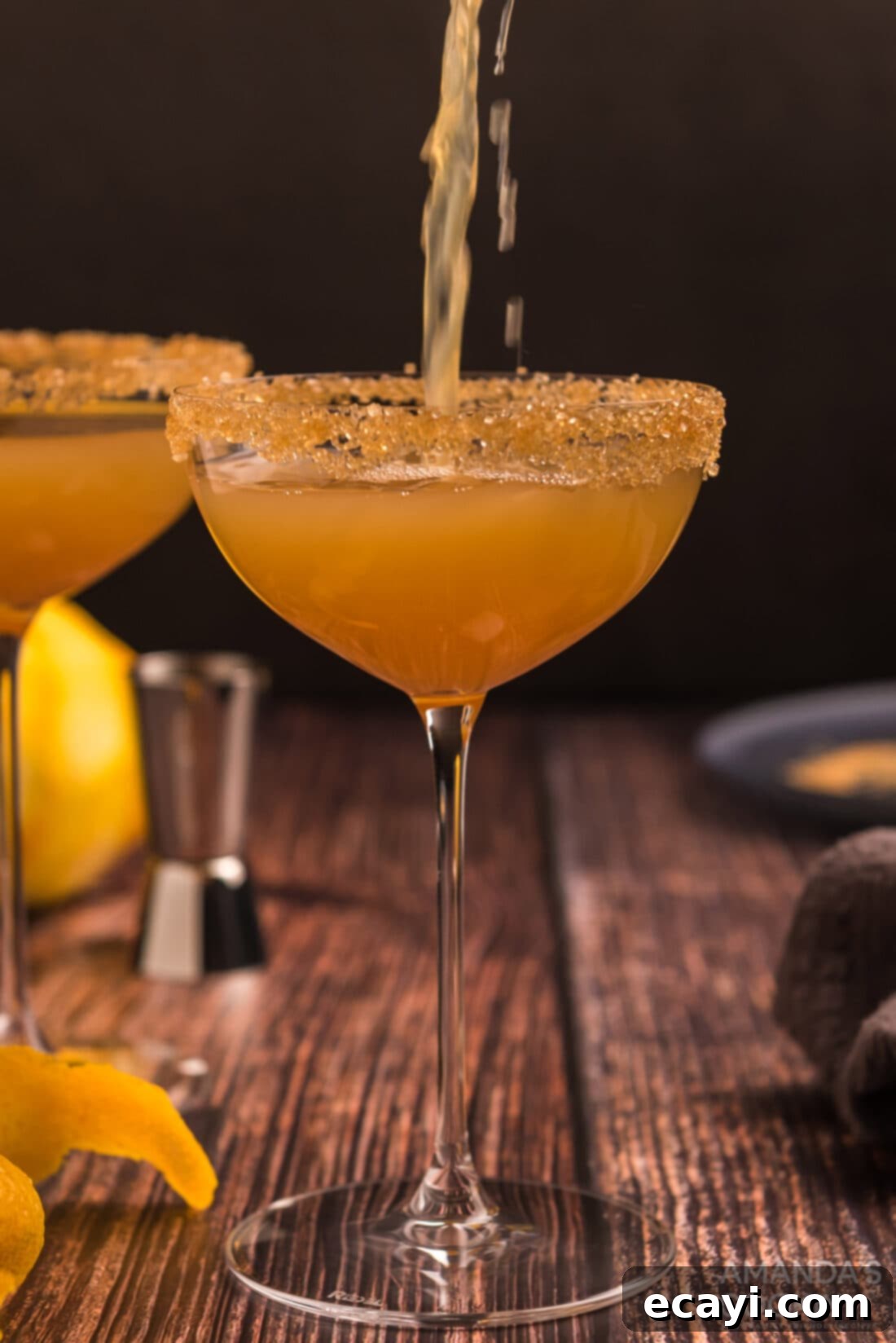
Essential Ingredients for Your Classic Sidecar Cocktail
Crafting the perfect Sidecar requires just a few key ingredients. Quality matters, as each component plays a vital role in achieving the cocktail’s signature balance. You’ll find all precise measurements, specific ingredients, and detailed instructions in the printable recipe card located conveniently at the end of this comprehensive guide.
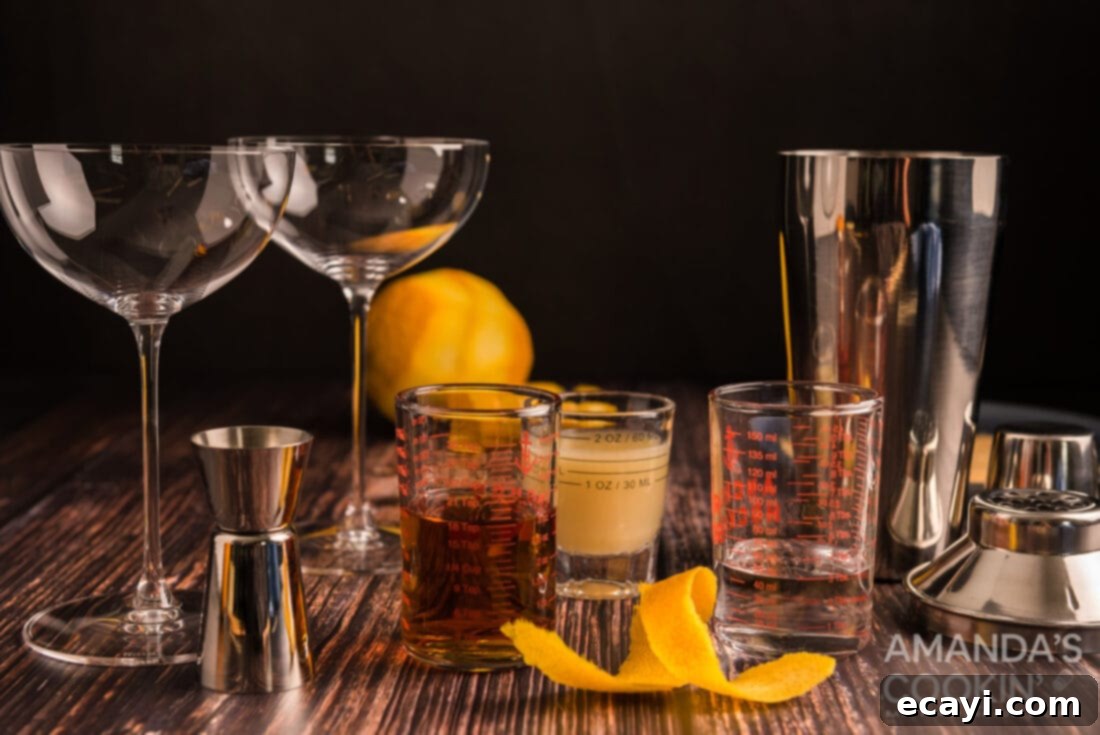
Detailed Ingredient Information & Smart Substitution Suggestions
LIQUOR – Brandy or Cognac: The heart of a Sidecar is undoubtedly its brandy or cognac. Traditionally, the recipe called for equal parts, but the more popular English version, which we follow, emphasizes a 2:1:1 ratio, with two parts brandy to one part each triple sec and lemon juice. This allows the sophisticated notes of the grape-based spirit to truly shine. For an authentic experience, opt for a good quality cognac (like a VS or VSOP) or a fine brandy. If you’re new to brandy or looking for an alternative, bourbon can make for a delightful, albeit different, “bourbon Sidecar” with its caramel and vanilla undertones. Experimentation is key to finding your personal preference.
LIQUOR – Triple Sec: This orange-flavored liqueur adds both sweetness and a bright citrus note. The choice of triple sec can significantly impact the cocktail’s final flavor and sweetness. Higher quality triple secs (like Cointreau or Grand Marnier, though Grand Marnier is technically an orange liqueur, not triple sec) offer a more refined orange essence and less cloying sweetness. For a deeper, richer orange flavor, an orange curaçao makes an excellent substitution. Curaçao often has a more pronounced bitter orange profile, which can add another layer of complexity to your Sidecar.
FRESH LEMON JUICE: This is non-negotiable for a truly outstanding Sidecar. Always use freshly squeezed lemon juice. Bottled lemon juice often contains preservatives and lacks the vibrant, zesty aroma and crisp tartness that fresh juice provides. The brightness of fresh lemon juice is crucial for balancing the sweetness of the triple sec and the richness of the brandy, creating that signature refreshing zing that makes the Sidecar so beloved. Don’t skip this essential step!
GARNISH – Orange Peel: An orange peel garnish is not just for looks; it adds an aromatic dimension to the drink. The oils from the twisted peel release fragrant citrus notes that complement the cocktail’s flavors. We aim for authenticity in our recipe, which includes a thick orange peel ribbon, easily reproduced by any home bartender using a vegetable peeler. Just be careful to avoid too much of the white pith, which can be bitter.
OPTIONAL GARNISH – Sugar Rim: While not traditionally part of the most classic Sidecar recipes, some versions do call for a sugared rim. This can be a delightful addition if you prefer a slightly sweeter initial taste, as the sugar crystals help to counteract the inherent bitterness and tartness of the triple sec and lemon juice. If you opt for a sugar rim, use fine sanding sugar for a beautiful presentation and a pleasant texture. It’s an easy way to customize your drink to your personal preference, adding a touch of elegance and sweetness right from the first sip.
Crafting Your Perfect Sidecar Cocktail: Step-by-Step Guide
These step-by-step photos and detailed instructions are provided to help you visualize and effortlessly recreate this iconic cocktail at home. For a complete, printable version of this recipe, including exact measurements and a comprehensive list of instructions, simply Jump to Recipe at the bottom of this page.
- Prepare the Glass (Optional Sugar Rim): If you choose to sugar your glass, begin by pouring a small amount of fine sanding sugar into a shallow dish that is wide enough to accommodate the rim of your serving glass. Next, lightly moisten the rim of your chilled coupe or martini glass. This can be done by running a lemon wedge around the rim or by dipping it into a shallow plate of water.
- Sugar the Rim: Carefully dip the moistened rim of the glass into the sanding sugar, rotating it gently to ensure an even, consistent coating. Once sugared, set the glass aside while you prepare your other ingredients and spirits.
- Prepare the Orange Garnish: Using a high-quality vegetable peeler, carefully peel a thick ribbon of orange rind. Aim for a piece that is long enough to twist attractively. Be mindful to avoid including too much of the bitter white pith. Gently twist the peel to express its aromatic oils and set it aside for garnishing.
- Combine Ingredients in Shaker: Measure out 2 ounces of your chosen cognac or brandy and pour it into a cocktail shaker. Follow this with 3/4 ounce of triple sec and 3/4 ounce of freshly squeezed lemon juice. This 2:1:1 ratio is key to our perfectly balanced Sidecar.

Precisely measuring the brandy for your Sidecar. 
Adding the crucial lemon juice for a balanced tartness. - Shake and Strain: Fill your cocktail shaker generously with ice. Secure the lid tightly and shake vigorously for about 15-20 seconds. This is essential not only to chill the drink thoroughly but also to achieve the perfect dilution. Once well-chilled, double-strain the cocktail into your prepared coupe or martini glass to ensure a smooth, ice-chip-free consistency.

The perfectly chilled Sidecar, ready to be strained. - Garnish and Serve: Finally, place your twisted orange peel garnish into the drink or on the rim of the glass. The vibrant color and fragrant oils will enhance the experience. Serve immediately and savor your perfectly crafted Sidecar cocktail!
Frequently Asked Questions & Expert Tips for the Sidecar
If you’re out of brandy or cognac, bourbon can be an interesting alternative, creating a “Bourbon Sidecar” with a distinct flavor profile. For triple sec, a quality orange curaçao is an excellent swap, often lending a deeper, more nuanced orange flavor with a slight hint of bitterness that can elevate the drink. Both substitutions offer unique variations while maintaining the core structure of the cocktail.
While some early French recipes suggested equal parts (1:1:1) of brandy, triple sec, and lemon juice, the widely preferred and most balanced ratio today, often attributed to the English version, is 2 parts brandy to 1 part triple sec and 1 part fresh lemon juice (2:1:1). This allows the brandy to be the star, balanced by the sweetness and tartness.
Always shake a Sidecar! Cocktails that contain citrus juice, dairy, or egg whites are typically shaken to properly emulsify the ingredients, chill them thoroughly, and achieve the desired aeration and dilution. Stirring is reserved for spirit-forward cocktails composed solely of spirits and liqueurs (like a Manhattan or Martini), where clarity and a smooth texture are desired.
A Sidecar is traditionally served in a chilled coupe glass or a martini glass. Both options showcase the drink’s beautiful color and elegant presentation. Chilling the glass beforehand is a simple step that helps keep your cocktail colder for longer, enhancing the drinking experience.
Using freshly squeezed lemon juice is paramount for a superior Sidecar. Bottled lemon juice often has an artificial, flat, or overly acidic flavor due to preservatives and processing. Fresh lemon juice provides a vibrant, bright, and complex tartness that perfectly balances the other ingredients and offers a delightful aromatic zest that bottled juice simply cannot replicate. It’s truly a game-changer for this cocktail.
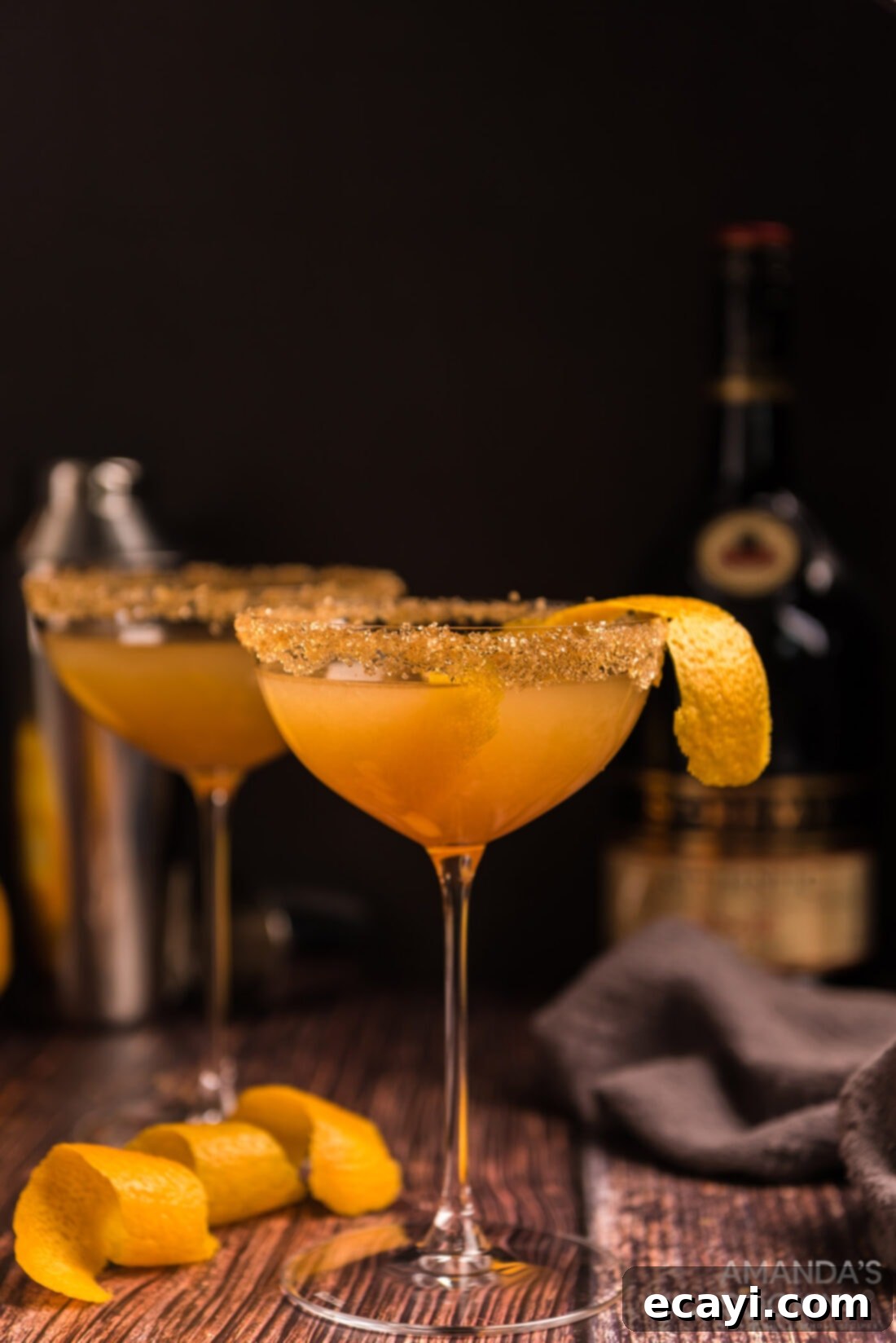
Expert Serving Suggestions for Your Sidecar Cocktail
This classic Sidecar cocktail recipe delivers a strong, yet perfectly balanced, citrusy experience with just the right touch of bitterness and sourness, making it incredibly palatable and deeply satisfying. It’s the quintessential drink for friends who appreciate witty banter and a sophisticated edge – those who might be tastefully bitter or sour themselves! Serve this exquisite cocktail as is, without ice, allowing its perfectly chilled essence to unfold. It’s wonderfully versatile and can be enjoyed as an elegant aperitif to whet the appetite before dinner, or as a sophisticated digestif to round off a meal. Consider pairing it with light appetizers like cheese and crackers, olives, or even a citrus-marinated seafood dish. The vibrant citrus notes also make it a fantastic companion to richer desserts, cutting through sweetness with its refreshing tang. For an extra touch of flair, ensure your coupe or martini glasses are impeccably chilled before pouring.
Discover More Exquisite Cocktail Recipes
If you’ve enjoyed the refined taste of the Sidecar, we invite you to explore more of our expertly crafted cocktail recipes. From refreshing and bright to deep and complex, there’s a drink for every mood and occasion:
- Gimlet Cocktail: A crisp and refreshing gin or vodka-based classic with lime.
- Bramble Cocktail: A delightful gin-based drink bursting with fresh berry flavors.
- Rum Cruiser Cocktail: A tropical escape in a glass, perfect for sunny days.
- Bailey’s White Russian: A creamy, indulgent twist on a beloved classic.
- Lemon Drop Cocktail: Our famously sweet and tart vodka martini.
- Manhattan Cocktail: A timeless and robust whiskey cocktail for the discerning drinker.
I absolutely adore sharing my passion for baking and cooking, and all my kitchen experiences, with each and every one of you! Remembering to return daily for new recipes can sometimes be a challenge, which is why I offer a convenient newsletter delivered right to your inbox every time a new recipe is posted. Simply subscribe here and start receiving your free daily recipes, making it easier than ever to discover your next favorite dish!

Sidecar Cocktail
IMPORTANT – There are often Frequently Asked Questions within the blog post that you may find helpful. Simply scroll back up to read them!
Print It
Pin It
Rate It
Save ItSaved!
Ingredients
- 4 oz brandy or cognac
- 1 ½ oz triple sec
- 1 ½ oz lemon juice
- orange twist optional garnish
- sanding sugar optional garnish
Things You’ll Need
-
Jigger
-
Cocktail Shaker
-
Vegetable Peeler
Before You Begin
- If you’re not sure about the brandy or cognac, you can use bourbon for a unique twist, and the triple sec can be swapped out for an orange curaçao for a deeper orange flavor.
- Always use freshly squeezed lemon juice for the best flavor; bottled juice simply won’t do justice to this classic cocktail.
- Chill your serving glasses (coupe or martini) in advance for an optimal drinking experience.
Instructions
-
If you are sugaring your glass, place the sanding sugar in a shallow dish wide enough for the top of the glass. Lightly wet the rim of your chilled coupe or martini glass.sanding sugar
-
Dip the moistened glass rim gently into the sanding sugar, rotating to get an even coating. Set aside as you prepare your liquid ingredients.
-
Using a vegetable peeler, carefully peel a thick ribbon of orange rind, avoiding the bitter white pith. Gently twist the peel to release its aromatic oils and set it aside for garnishing.
-
In a cocktail shaker, combine 4 oz of cognac or brandy, 1 ½ oz of triple sec, and 1 ½ oz of fresh lemon juice. Fill the shaker generously with ice.4 oz brandy, 1 1/2 oz triple sec, 1 1/2 oz lemon juice
-
Secure the lid and shake vigorously for 15-20 seconds until the shaker is well-chilled. Double-strain the cocktail into your prepared coupe or martini glass.
-
Garnish with your twisted orange peel and serve immediately to enjoy this classic masterpiece!orange twist
Nutrition
The recipes on this blog are tested with a conventional gas oven and gas stovetop. It’s important to note that some ovens, especially as they age, can cook and bake inconsistently. Using an inexpensive oven thermometer can assure you that your oven is truly heating to the proper temperature. If you use a toaster oven or countertop oven, please keep in mind that they may not distribute heat the same as a conventional full sized oven and you may need to adjust your cooking/baking times. In the case of recipes made with a pressure cooker, air fryer, slow cooker, or other appliance, a link to the appliances we use is listed within each respective recipe. For baking recipes where measurements are given by weight, please note that results may not be the same if cups are used instead, and we can’t guarantee success with that method.
This post originally appeared here on January 13, 2019, and has since been extensively updated with new photos, expanded content, and expert tips to enhance your cocktail-making experience.
